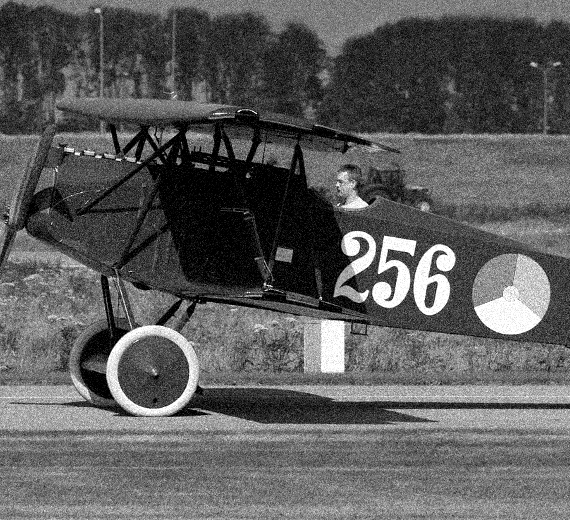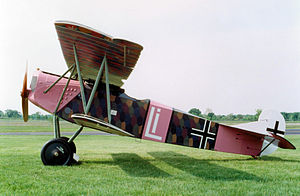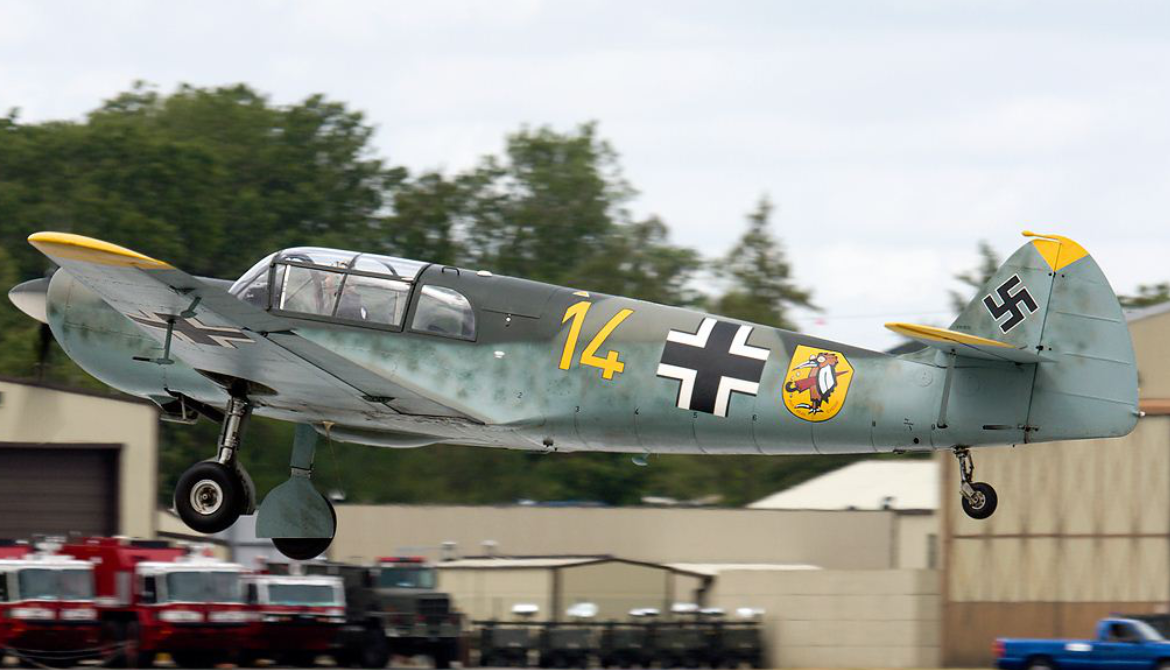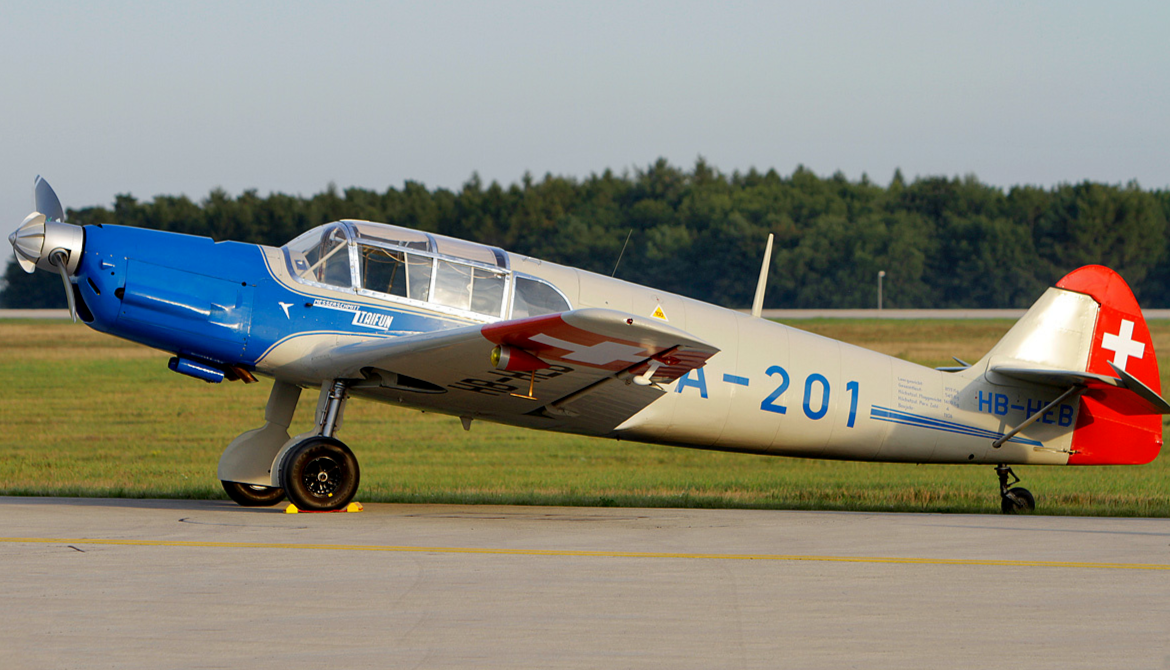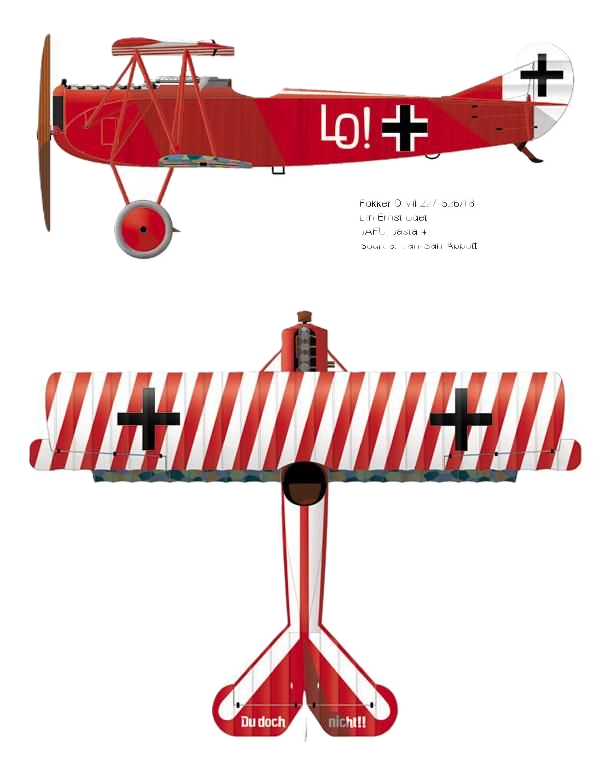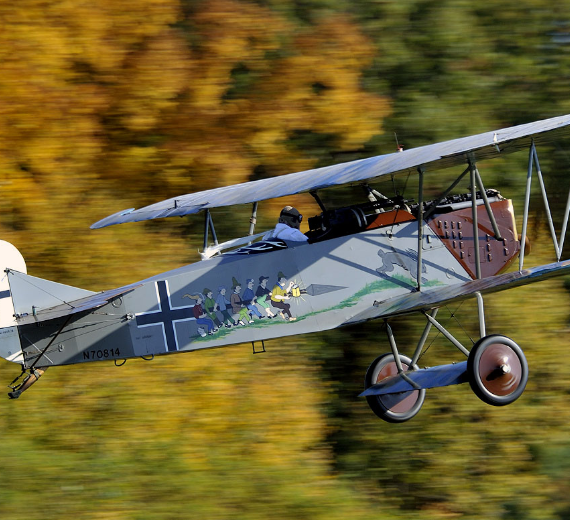Fokker D.VII
WW I fighter aircraft
|
|||||||||||||||||
.
History Fokker-Flugzeugwerke
Fokker D.VII
WW I fighter aircraft

The Fokker D.VII was a German World War I fighter aircraft designed by Reinhold Platz of the Fokker-Flugzeugwerke. Germany produced around 3,300 D.VII aircraft in the second half of 1918. In service with the Luftstreitkräfte, the D.VII quickly proved itself to be a formidable aircraft. The Armistice ending the war specifically required, as the fourth clause of the "Clauses Relating to the Western Front", that Germany was required to surrender all D.VIIs to the Allies. Surviving aircraft saw much service with many countries in the years after World War I.
I
Development and production

Fokker's chief designer, Reinhold Platz, had been working on a series of experimental V-series aircraft, starting in 1916. The aircraft were notable for the use of cantilever wings. Hugo Junkers and his aviation firm had originated the idea in 1915 with the first practical all-metal aircraft, the Junkers J 1 monoplane, nicknamed Blechesel (Sheet Metal Donkey or Tin Donkey). The wings were thick, with a rounded leading edge. The shape of the wings' airfoil gave greater lift, with its relatively "blunt" leading edge (as seen in cross-section) giving it more docile stalling behavior than the thin wings commonly in use.
Operational history
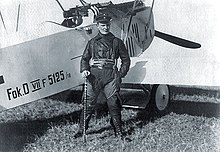


When the Fokker D.VII entered squadron service with Jasta 10 in early May 1918, Allied pilots at first underestimated the new fighter because of its squarish, ungainly appearance. However, their experiences in combat quickly forced them to revise their view. The type quickly proved to have many important advantages over the Albatros and Pfalz scouts. Unlike the Albatros scouts, the D.VII could dive without any fear of structural failure. The D.VII was also noted for its high manoeuvrability and ability to climb, its remarkably docile stall and reluctance to spin. It could "hang on its prop" without stalling for brief periods of time, spraying enemy aircraft from below with machine gun fire. These handling characteristics contrasted with contemporary scouts such as the Camel and SPAD, which stalled sharply and spun vigorously.
0
KmCeiling
0
KmCombat RANGE
0
Km/hAircraft Speed
0
Max Crew
Photo Gallery
Fokker-Flugzeugwerke
Fokker D.VII
WW I fighter aircraft


Fokker-Flugzeugwerke
Fokker D.VII WW I fighter aircraft
General Info
-
-
- Crew: 1
- Length: 6.954 m (22 ft 10 in)
- Wingspan: 8.9 m (29 ft 2 in)
- Height: 2.75 m (9 ft 0 in)
-
Powerplant
-
-
- Wing area: 20.5 m2 (221 sq ft)
- Empty weight: 670 kg (1,477 lb)
- Gross weight: 906 kg (1,997 lb)
- Powerplant: 1 × Mercedes D.III 6-cyl. water-cooled in-line piston engine, 120 kW (160 hp) ::::or 1 × 130 kW (170 hp) Mercedes D.IIIa 6-cyl. water-cooled in-line piston engine
-
-
-
- or 1 × 138 kW (185 hp) BMW IIIa 6-cyl. water-cooled in-line piston engine, 175 kW (235 hp) (85 octane fuel, rating at low level, emergency only, risk of engine damage.)
-
-
-
Performance
- Maximum speed: 189 km/h (117 mph, 102 kn) ::::with BMW IIIa engine - 200 km/h (120 mph; 110 kn)
- Range: 266 km (165 mi, 144 nmi)
- Service ceiling: 6,000 m (20,000 ft)
- Rate of climb: 3.92 m/s (772 ft/min) ::::with BMW IIIa engine – 9.52 metres per second (1,874 ft/min)
- Time to altitude:
-
- 1,000 m (3,300 ft) in 4 minutes 15 seconds (1 minutes 40 seconds w/ BMW IIIa)
- 2,000 m (6,600 ft) in 8 minutes 18 seconds (4 minutes 5 seconds w/ BMW IIIa)
.
Links to Youtube & Others
The earliest production D.VIIs were equipped with 170–180 hp Mercedes D.IIIa. Production quickly switched to the intended standard engine, the higher-compression 134 kW (180–200 hp) Mercedes D.IIIaü. Some early production D.VIIs delivered with the Mercedes D.IIIa were later re-engined with the D.IIIaü.
Fokker-Flugzeugwerke
Fokker D.VII WW1
In September 1918, eight D.VIIs were delivered to Bulgaria. Late in 1918, the Austro-Hungarian company Magyar Általános Gépgyár
Youtube Link
When the Fokker D.VII entered squadron service with Jasta 10 in early May 1918, Allied pilots at first underestimated the new fighter because of its squarish, ungainly appearance.

